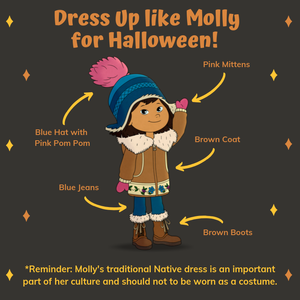This week is Halloween, which means it is time to talk about costumes, racism, stereotypes, and cultural appropriation. We are using this week’s blog post to amplify some excellent voices that have spoken beautifully to this issue already.
“Dressing up as another cultural group diminishes that cultural group to a caricature. And for youth, Indigenous and non-Indigenous, that can plant a seed that grows into something far worse down the road.
I’d like to plant a different seed.
What I’m talking about is appropriation. Like reconciliation, it’s a bit of a buzzword, so let me break it down into something more manageable. Appropriation is the act of borrowing elements from one culture and removing all context and meaning, with the intent of using those elements for your own purpose or profit. For example, dressing a non-Indigenous child as a “native chieftain” for Halloween, complete with a headdress, would be eliminating the context and meaning of the headdress, let alone a chief.”
Read the rest of Cree author David A. Robertson’s piece here.

We are huge fans of the Indigenous-created cartoon Molly of Denali which features a young Indigenous girl in a fictionalized town in Alaska. The show’s creators are helping to educate fans on how to dress up as a character without cultural appropriation!
“If you would like to dress up like Molly for Halloween, here is how you can do so respectfully. We do ask that people refrain from wearing Molly’s traditional Native dress (Regalia) as a costume. Mahsi’choo! #MollyofDenali#Halloween“

So how do you avoid selecting a costume for yourself (or your child) that is racist, perpetuates stereotypes, and is harmful to others? We love these tips from writer Maxine Kozak at Ryerson University.
“1. Are you using makeup to alter your natural skin tone?Such uses of makeup cannot be separated from their historical context.
2. Does the name of your costume include an ethnicity in the title?These are caricatures of a group of people, not costumes.
3. Are you wearing garments or accessories traditional to a culture? Wearing a culture is not a fashion statement. There is a fine line between appreciation and appropriation.
4. Are you dressed as an offensive historical figure? Dressing as offensive historical figures can be construed as glorification, even if your costume is meant to be satirical. Just don’t.
5. Is your costume “funny” because it mocks the real life experiences of others? Belittling the struggles of marginalized groups is never okay.”
And remember…you can always dress up as a pumpkin!

Photo courtesy of @hemespenelope




